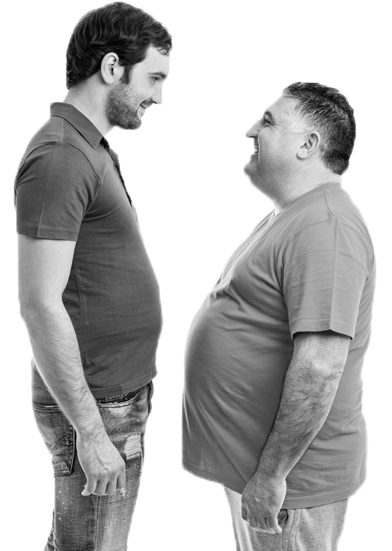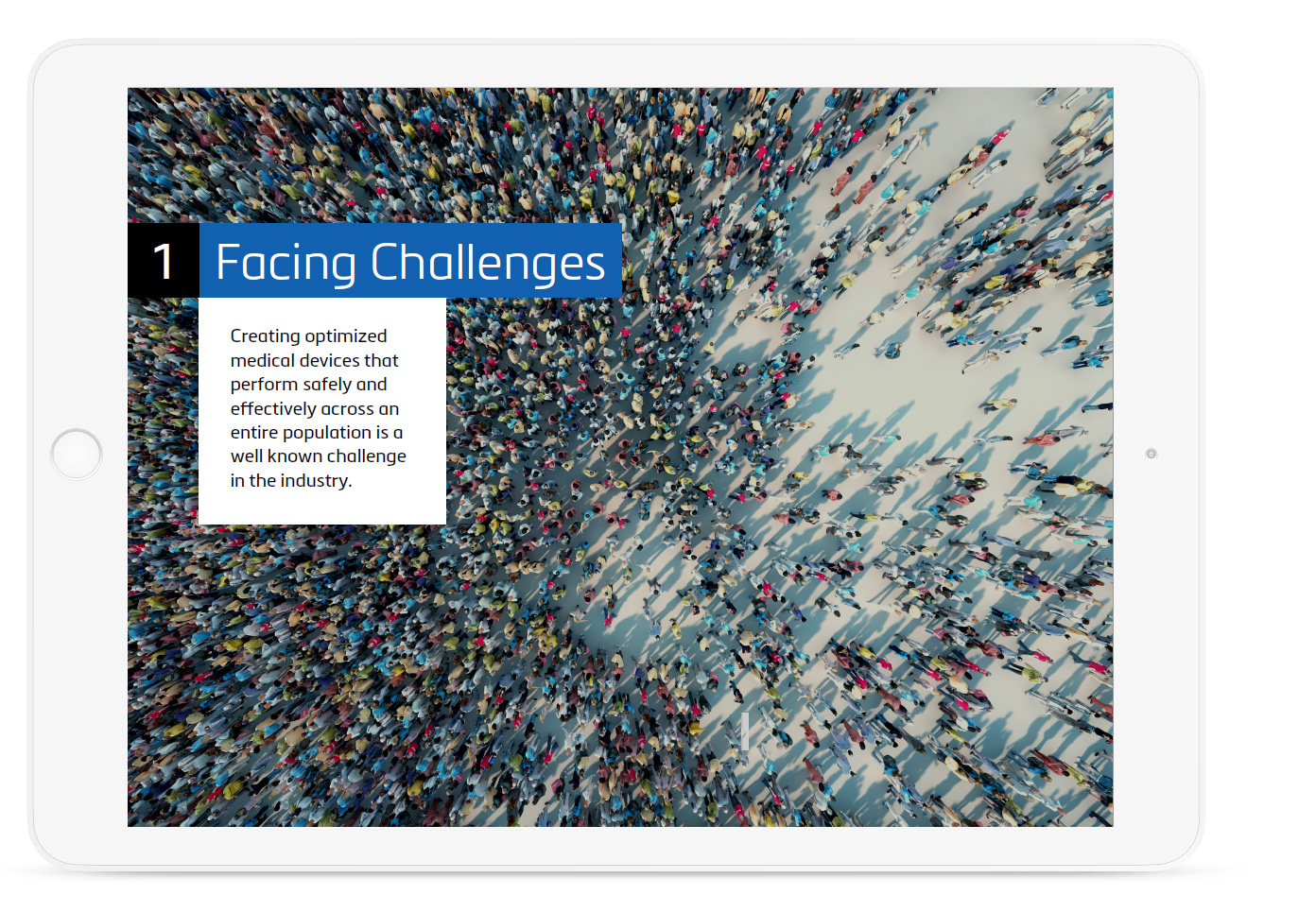Accelerate, Improve, Prove.
Using virtual patients for implant R&D
Discover how to accelerate medical device R&D
by unlocking the power of 3D medical images

This eBook will provide key insights into:
- How to improve the efficiency of your R&D process, reduce the risk of design errors, increase population coverage, and uncover new anatomical insights.
- How to provide solid rationale for the anatomy used for testing devices, and strengthen evidence-based marketing messages.
- How virtual patients offer added value to medical device companies, both technical and financial, direct and indirect.
- How virtual patients make it possible to optimize the geometry of hip implants (DJO), bench test stent grafts (Medtronic), and how they support the design rationale behind knee implants (Exactech).
- How to implement virtual patients as well as 3D printing in your R&D.
An introduction to Virtual Patients
Advances in medical imaging are leading to ever-growing databases of high-quality computed tomography (CT) and magnetic resonance (MR) images. Virtual patients are the most powerful way to use these 3D medical images to improve and accelerate medical device R&D. Converting CT and MR scans to virtual patients enables R&D engineers to characterize the anatomy by performing advanced morphological analyses. Virtual patients can also be used to verify the implant fit by means of either virtual implantations or 3D printed models for physical testing.
“Using virtual patients and 3D printing has been a great help to develop test methods and provide rationale for the choice of anatomical shapes”
During a conventional medical device design process, new models are typically tested by implanting them manually into a limited number of human and animal cadavers, as well as living animals, or by means of expensive clinical trials. However, traditional methods related to characterizing the anatomy of patient populations have significant limitations. As a consequence, there are significant risks of failure during initial patient testing, resulting in a longer time to market.
By using virtual patients, you can now circumvent this trial-and-error process. You can thus accelerate your device design cycle and create better implants. Virtual patients can also be used as proof of concept, both for the general market and regulatory instances.
Do you have a question?
If you too wish to benefit from the added value of working with virtual patients, you can count on us to work with you to find the right solution for you. Contact us today, we are here to help you:
- Define your goals so as to determine how to use virtual patients in your R&D process
- Acquire and assess the required input data
- Outline the appropriate analysis method and tools
- Calculate the resources, project cost, and return on investment
About Materialise
Materialise is a global 3D printing software and services company whose medical division is dedicated to empowering researchers, engineers, and clinicians revolutionize patient care. Our open and flexible platform, the Materialise Mimics Innovation Suite, forms the foundation of our medical solutions and consists of a comprehensive range of software tools and services for 3D medical image processing and 3D printing. With almost three decades of pioneering the industry under our belt, we work alongside our customers to build groundbreaking 3D imaging and 3D printing applications that make the world a better and healthier place.

